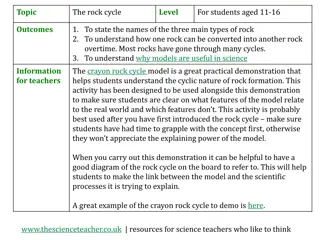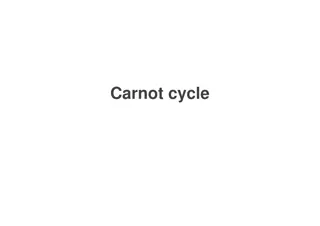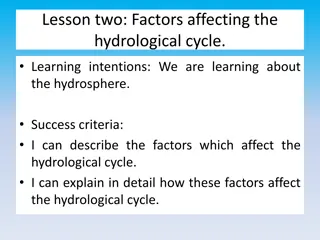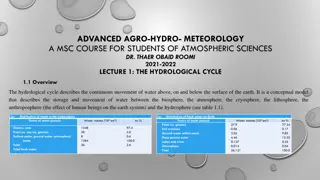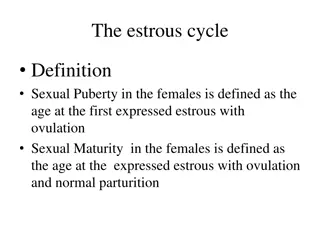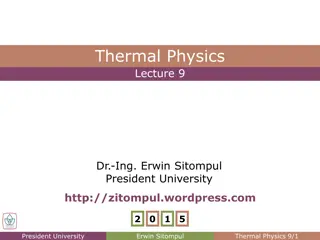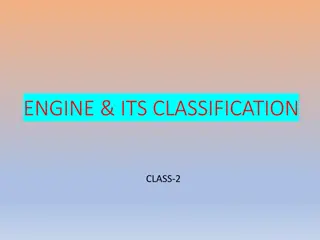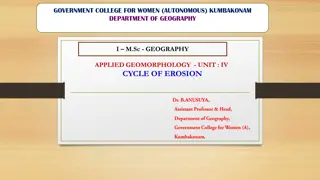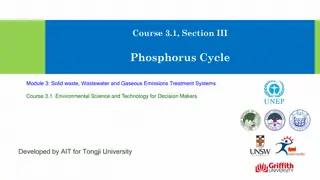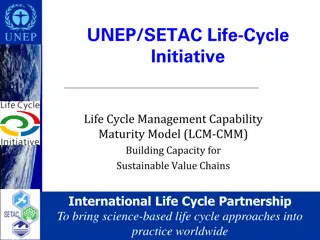Understanding Engine Cycle Analysis
The engine cycle analysis delves into the intricate processes within a combustion chamber, simplifying the complex interactions of air, fuel vapor, and exhaust gases. Idealized assumptions help analyze the constant-pressure intake, compression, and expansion strokes, along with the combustion process and exhaust blow-down. This analysis aids in approximating actual engine processes with ideal models for evaluation and optimization.
Download Presentation

Please find below an Image/Link to download the presentation.
The content on the website is provided AS IS for your information and personal use only. It may not be sold, licensed, or shared on other websites without obtaining consent from the author. Download presentation by click this link. If you encounter any issues during the download, it is possible that the publisher has removed the file from their server.
E N D
Presentation Transcript
Chapter three Engine cycle By Laith Batarseh
Engine cycle 3.1 AIR-STANDARD CYCLES The gases inside combustion chamber is a mixture of air + fuel vapor + exhaust gasses from the previous cycle. The gases inside the combustion chamber is assumed as air to simplify the analysis. hence, these gases are assumed ideal gas through the entire process. this assumption is valid because:- the percentage of exhaust gases in 2nd half of the cycle and fuel vapor in the 1st half of the cycle are relatively small in. Closing the cycle simplifies the analysis: both exhaust and intake gases contain large amount of air The combustion process is replaced with a heat addition term Qin The open exhaust process, which carries a large amount of enthalpy out of the system, is replaced with a closed system heat rejection process Qout of equal energy value. Actual engine processes are approximated with ideal processes.
Engine cycle Assumption for analysis The almost-constant-pressure intake and exhaust strokes are assumed to be constant pressure. Compression strokes and expansion strokes are approximated by isentropic processes (reversible and adiabatic) The combustion process is idealized by a constant-volume process (SI cycle), a constant-pressure process (CI cycle), or a combination of both (CI Dual cycle). Exhaust blow-down is approximated by a constant- volume process. All processes are considered reversible
Engine cycle According to the previous assumption, the following air-relations can be used
Engine cycle Standard values of air properties
Engine cycle 3-2 OTTO CYCLE
Engine cycle The intake stroke of the Otto cycle
Engine cycle the compression stroke
Engine cycle The combustion process
Engine cycle the power stroke
Engine cycle Blow down process
Engine cycle the exhaust stroke
Engine cycle 3-3 REAL AIR-FUEL ENGINE CYCLES
Engine cycle In real cycle 1. Real engines operate on an open cycle with changing composition 2. In a real engine inlet flow may be all air, or it may be air mixed with up to 7% fuel, either gaseous or as liquid droplets, or both 3. There are heat losses during the cycle of a real engine which are neglected in air-standard analysis 4. Combustion requires a short but finite time to occur, and heat addition is not instantaneous at TDC, as approximated in an Otto cycle 5. The blow-down process requires a finite real time and a finite cycle time, and does not occur at constant volume as in air-standard analysis 6. In an actual engine, the intake valve is not closed until after bottom- dead-center at the end of the intake stroke 7. Engine valves require a finite time to actuate ( t)actual = 0.85 ( t)OTTO
Engine cycle 3-6 DIESEL CYCLE
Engine cycle 3-6 DIESEL CYCLE
Engine cycle 3-6 DIESEL CYCLE
Engine cycle 3-6 DIESEL CYCLE
Engine cycle 3-6 DIESEL CYCLE
Engine cycle 3-6 DIESEL CYCLE
Engine cycle 3-6 DIESEL CYCLE
Engine cycle EXAMPLE PROBLEM 3-4 A small truck has a four-cylinder, four-liter CI engine that operates on the air- standard Dual cycle (Fig. 3-10) using light diesel fuel at an air-fuel ratio of 18. The compression ratio of the engine is 16:1 and the cylinder bore diameter is 10.0 cm. At the start of the compression stroke, conditions in the cylinders are 60 C and 100 KPa with a 2% exhaust residual. It can be assumed that half of the heat input from combustion is added at constant volume and half at constant pressure. Calculate: 1. temperature and pressure at each state of the cycle
Engine cycle 3-8 COMPARISON OF OTTO, DIESEL, AND DUAL CYCLES Figure 3-11 compares Otto, Diesel, and Dual cycles with the same inlet conditions and the same compression ratios. ( t)OTTO > ( t)DUAL > ( t)DIESEL in Fig. 3-12. A more realistic way to compare these three cycles would be to have the same peak pressure-





